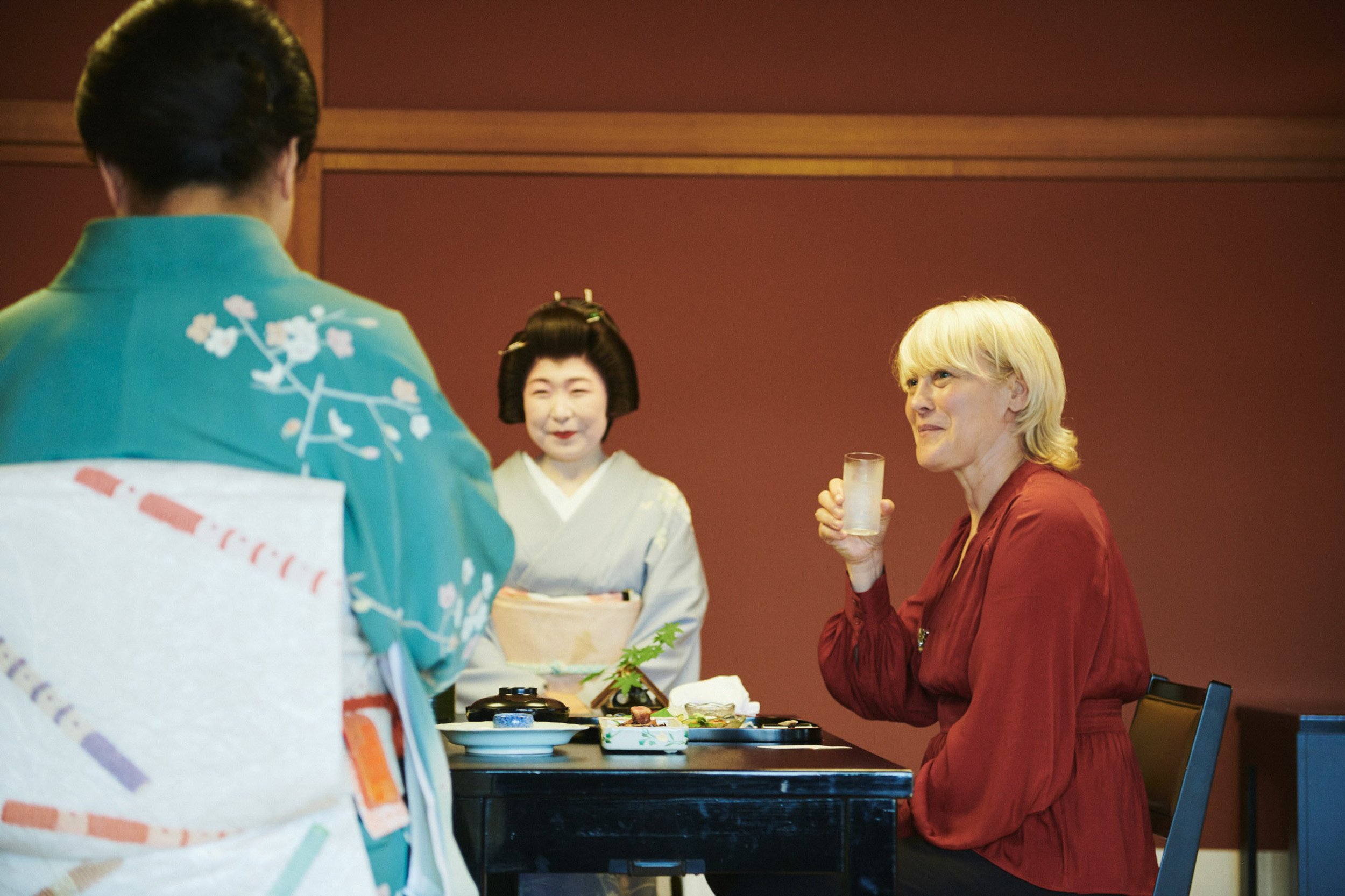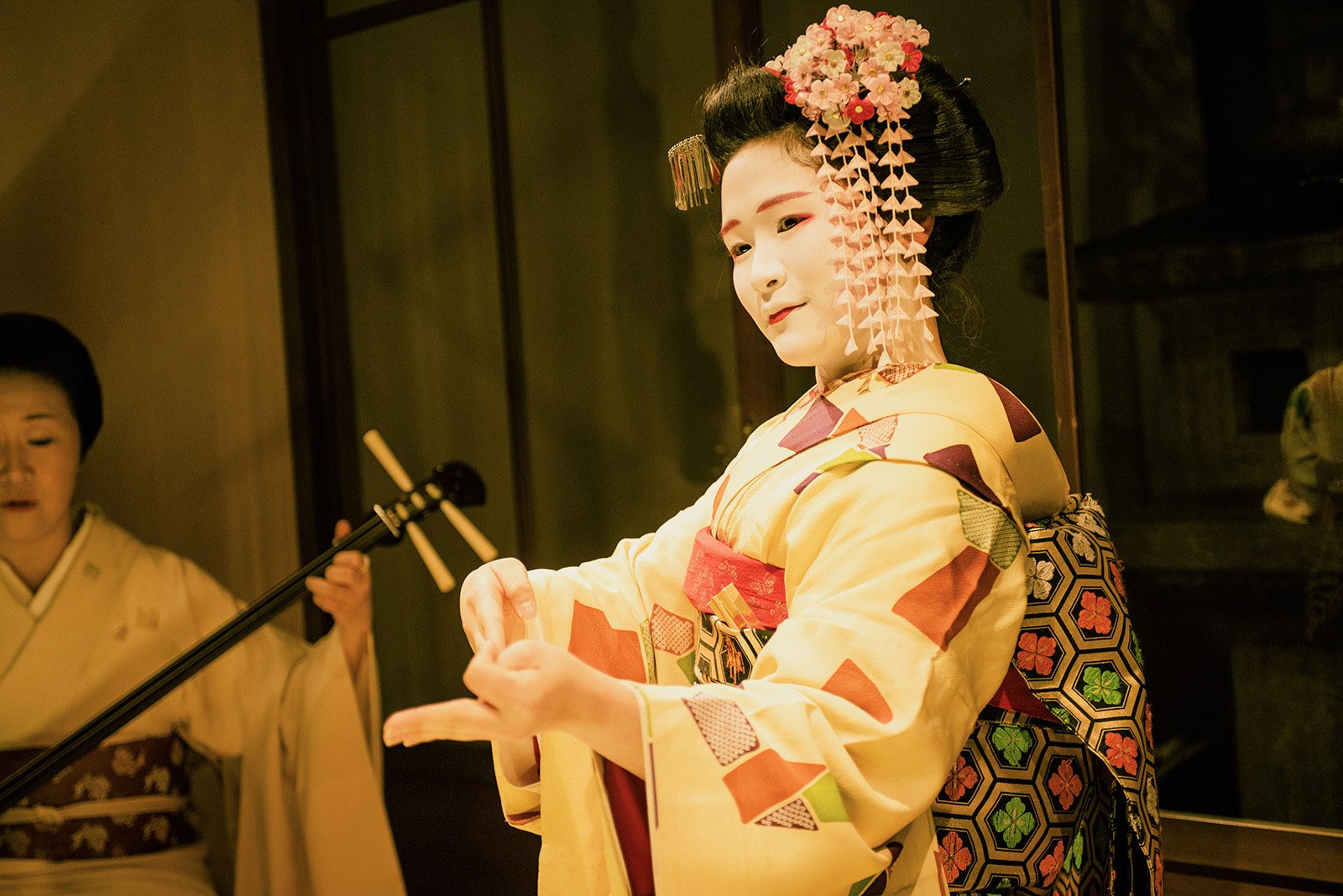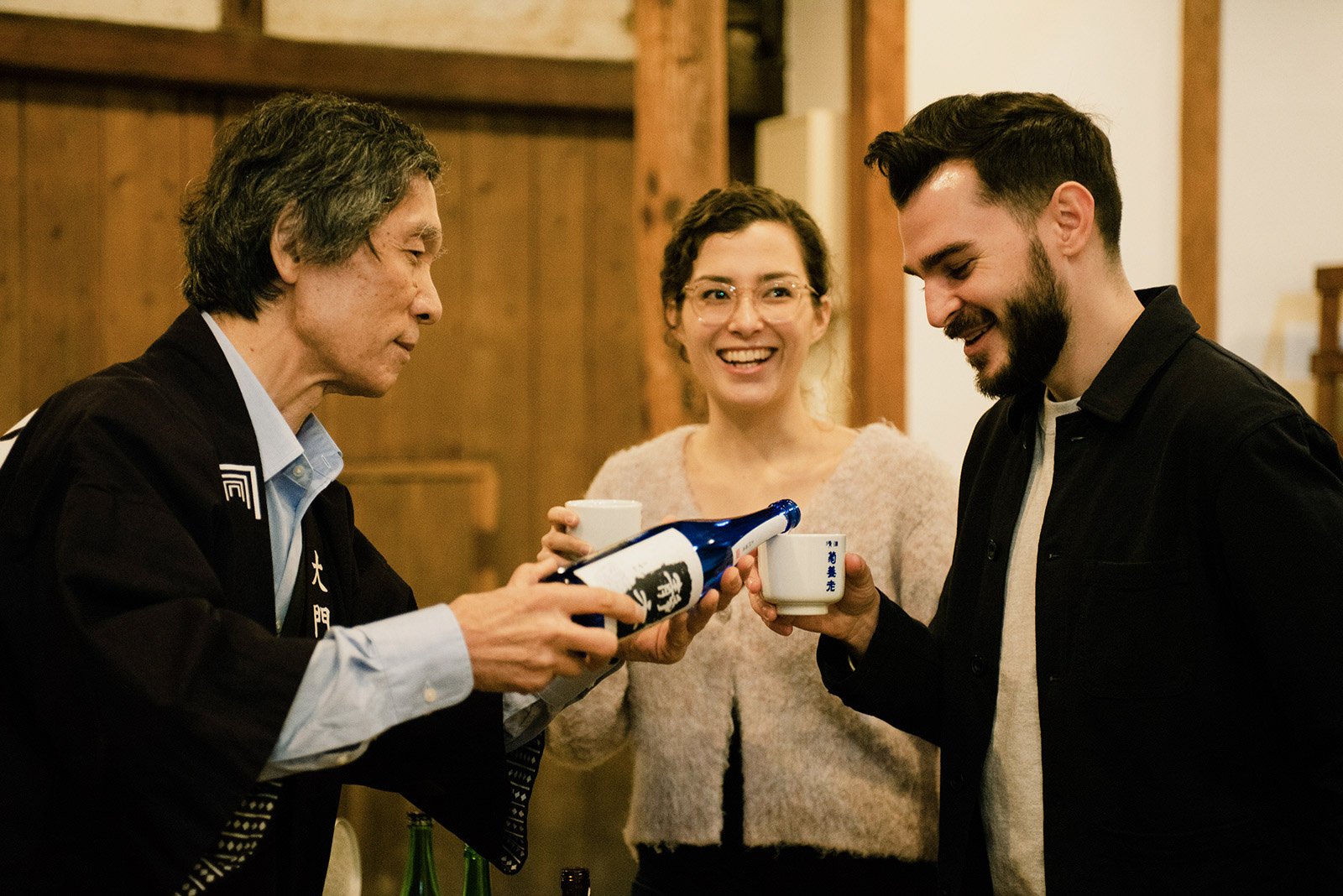The War on Geisha: Identity in the Face of Tradition, Modernity, and the West
By Genie Harrison
Often considered an element of Japanese culture shrouded in mystery, geisha are one of the most widely identifiable images of Japan. As an art form of performance, music, and hospitality transmitted solely from master to student, secrecy is inherent within the practice. Indeed, records of the craft were purposefully private, and the tradition remained resistant to outside influence. However, with the opening of Japan’s borders during the Meiji Restoration and the resulting boom of Western interest in traditional arts, the conception of geisha in Japan began to shift. From the turn-of-the-century import of Western thought and industry, to the cultural tensions of wartime and its lasting effects, the creased fabric of geisha history is one shaped by both tradition and modernity. Using the political and cultural changes that Japan underwent during the late 19th and 20th centuries as a critical viewpoint, we might better understand the cultural position occupied by the geisha not only during this period but also today.
Etymology of Geisha
Literally translating to “art person,” the term geisha has existed in the Japanese language since the 13th century and originally referred to male taikomochi drum players who entertained at elite parties in local pleasure quarters. However, in the mid-18th century, the term was adopted by female odoriko dancing girls and musicians who wished to continue offering their services as they entered womanhood, and to issue a distance between the Edo period pleasure quarters. While this group of entertainers had previously been very closely associated with the brothels of the time, engaging in prostitution to varying degrees, the adoption of the term geisha enabled female entertainers to protect their lives and livelihoods from the brutalities they often suffered in the pleasure quarters, and become solely performers. During this time, the art of geisha began to codify, referring to a female performer trained in music, dance, conversation, and hospitality. Influenced by contemporaneous performance styles of the Edo period, notably Kabuki theater, geisha came to be synonymous with elaborate kimono, traditional hairstyles, and oshiroi white makeup. The popularity of the female geisha continued to grow, with their numbers expanding from hundreds to thousands throughout the 18th century and 19th century.
The Opening of Japan and Modernization of Geisha
During the Meiji period (1868-1912), a significant threat was posed to Japan’s sovereignty by the imperialist expansion of nations such as Britain and Italy. As a result, the Japanese government was forced to begin industrializing as a means of declaring themselves an equal partner on the global stage. In addition to the import of industrial practices, Western philosophy, culture, and education were rapidly adopted; 3,000 foreign teachers and technicians were invited to teach and practice in Japan, and Western books were translated and used in educational settings for the first time. Traditional Japanese aesthetic practices, such as the ceremonial robes of court nobles, the traditional topknot hairstyle, and the blackening of teeth by women, became taboo and eventually outlawed. In opening the country up to the wider world, Japan’s modernization became inextricably linked to westernization, and eventually, this cultural shift impacted the public’s perception of traditional arts, including the practice of geisha.
Building on the growing study of Western philosophy in Japan, many Meiji period intellectuals considered the very existence of traditional geisha practices to be a fundamental obstacle to Japan’s modernization. Arguing that “Japan would have to adopt Anglo-American norms of sexual morality in order to join the ranks of ‘civilized’ Western powers,” prominent thinkers such as Japanese philosopher Fukuzawa Yukichi and Mori Arinori, the founder of Japan’s modern education system, believed the geisha’s association with sex work and prostitution was prohibitive to a wider pursuit of “civilization.” Similarly, early feminists suggested that the geisha’s dedication to the needs – sexual or otherwise – of men also served as a blockage to women’s progress and enfranchisement. As monogamy became identified as the norm and the prolific adultery of men problematized, geisha and the wife were “inevitably pitted against each other.” Feminist activist Ishimoto Shidzue went so far as to argue that geisha threatened “monogamous marriages, perpetuated women’s oppression, and confirmed every despicable Western stereotype about submissive ‘Oriental’ women.”
As Japan sought to remodel itself in a manner appealing to the West, the particular practices of the geisha began to adapt in response. Experiments were made with Western dressing, with geisha becoming one of few groups of women during this period to adopt Western fashions as more than just an accessory. Many also tried their hand at Western-style dancing, and cocktails were served instead of sake at the teahouses as an additional nod to the changing times. In 1930, Kawamura Tokutarō, the leader of one of the best-known geisha societies in Tokyo, opened the geisha school, where seven hundred women “were obliged to receive the fundamentals of a ‘modern education,’” studying English and learning about jazz, Western manners, and how to read newspapers. Such decisions were received with mixed opinions. While some viewed these forays into Western culture to be unprofessional and a betrayal of the geisha’s image, others like the aforementioned Meiji intellectuals considered it an obvious, necessary evolution of the practice.
Wartime Geisha and the Return to Tradition
As the threat of World War II revealed itself, the allied partnership with the West that Japan pursued prior to and at the turn of the 20th century was drastically reconsidered. This infatuation “rapidly cooled” in the face of the nationalist fervor that developed at the end of the 1930s. English became identified as the language of the ‘enemy,’ and loan words that had previously been accepted into Japanese were officially erased. Radio programming similarly grew increasingly patriotic, and officials in one north-eastern community were reported to have burned a collection of blonde, blue-eyed dolls “to guard local children from ‘Western infection.’” The radical Western-style geisha experiments were effectively abandoned.
In order to strengthen and exemplify Japan’s “unique civilization,” a more traditional and historically-rooted practice of geisha was encouraged: women returned to wearing kimono, and a stricter adherence to traditional arts was resumed. As American anthropologist Liza Dalby astutely identifies, the invocation of the geisha in the face of nationalist threat was “indicative of the inextricable ties linking this institution to the structure of society and the fortunes of the nation.” In effect, the adoption of a hyper-traditionalist approach to geisha became an explicit rejection of the West and cemented the practice as a standard bearer of a uniquely Japanese identity within the national consciousness.
Even if this renewed prosperity proved to be a temporary phenomenon, geisha, like the rest of the country, remained at the behest of the war and its varying demands. As a consequence of its cabinet information board, controls on the liquor industry, and multiple police forces, the wartime Japanese state had “more leverage over how its citizens used their spare time.” Although geisha continued to cater to customers through the last years of the war, over 10,000 geisha houses were closed over this period, along with many teahouses and bars.
Geisha in Post-War Japan
Unsurprisingly, the demands of the Second World War also bled significantly into the latter half of the twentieth century. While the early 20th century had been abundant with new recruits known as maiko, from the daughters of existing geisha to waitresses and performing artists, the rapid industrial expansion that occurred after the war drastically widened the job market for young women. While economically vulnerable families might previously have considered sending their daughters to places like Kyoto to work as indentured geisha, the mid-and post-war boom provided girls an array of alternative career options: from factory work to positions as translators, typists, and clerks. As a result, by 1965, the maiko population of Kyoto had fallen to approximately 80.
Beyond this decline in numbers, the post-war period brought several other lasting changes to the trade. As a consequence of compulsory education laws passed in the 1960s, girls could no longer be trained beginning in their early teens, resulting in geisha being much older – by 1975, the average geisha was 39. Similarly, geisha became less likely to retire upon the acceptance of a danna, or patron, as they became less likely to have children or any other extended family to support them.
Perhaps more significantly, this period brought about lasting changes to the role of geisha in Japanese society and even the status of traditional art itself. Without the threat of war, the nationalistic effort to reject Western influence and return to a traditional geisha aesthetic had lost its steam. As Japan began to rebuild under the supervision of the West, particularly the United States, the country resumed its path of modernization and – inextricably – westernization. Unlike at the turn of the century, geisha and other traditional arts failed to (re)modernize and (re)westernize alongside the rest of Japan.
By the latter half of the 20th century, geisha had come to be seen as old-fashioned by members of society – particularly younger men, who found them to be too expensive and overly sophisticated. Jokyū – waitresses or hostesses – who previously had been perceived to be uncultured or uneducated were now increasingly preferred for their greater relatability and affordable nature. In the words of historian Aiko Tanaka, although they had once been seen as the epitome of beauty and considered fashion leaders of society, “geisha’s ‘gei’ was becoming outdated.”
Since the opening of Japan’s borders in 1868, tradition, modernity, and the impact of the West have remained at the center of Japan’s evolving cultural identity. And, it would raise a question that Japan is still exploring today: what would be the role of a traditional art like geisha in a modernizing Japan?
Today, there are approximately 1,000 geisha that still practice in Japan, predominantly in Kyoto’s Gion entertainment district, a far cry from the estimated 80,000 geisha practicing up to the 1920s. Although geisha may still be found today performing at Japanese festivals, for the most part, their company is reserved for the elite: they attend gatherings at tea houses and ryoutei – luxurious Japanese restaurants. While their heyday might be over and their operations reduced, there is something rather fitting about the functioning of geisha today. While they remain, particularly visually, a cornerstone of Japanese culture, the exclusivity and subsequent elusive nature of their practice affirms and upholds the discreet disposition of the art form. Not only the tradition–but similarly, the mystery–of the geisha is preserved.
About the Author: A recipient of the Daiwa Anglo-Japanese Scholarship, Genie Harrison is a writer currently based in Tokyo, where she works for popular lifestyle magazine, Tokyo Weekender. Educated at the University of Cambridge, she specializes in literature, with a particular focus on contemporary fiction written by Japanese female authors.







